Politics
'Cast Aside Like A Burden,' Say Pakistani Hindu Refugees Even As Jaisalmer Administration Announces Big Rehabilitation Plans
Swati Goel Sharma and Mayur Bhonsale
Jun 15, 2023, 04:47 PM | Updated 04:51 PM IST
Save & read from anywhere!
Bookmark stories for easy access on any device or the Swarajya app.
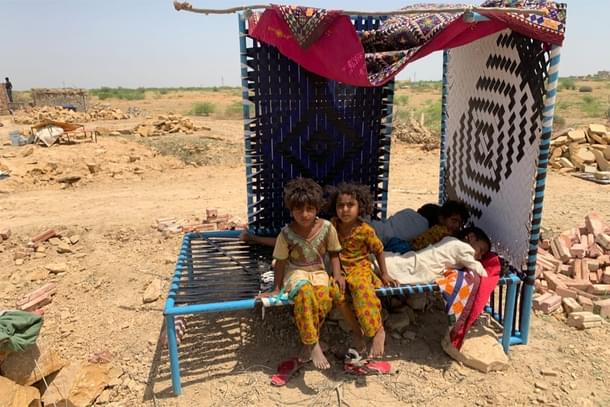
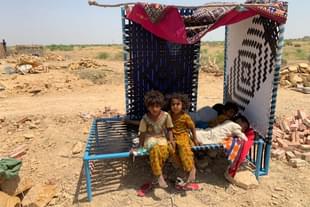
A full month has elapsed since dramatic developments unfolded in the city of Jaisalmer in Rajasthan pertaining to its Pakistani Hindu migrant population.
On 16 May, the Jaisalmer administration, citing encroachment of government-owned land, bulldozed a makeshift settlement inhabited by displaced Hindus hailing from Pakistan's Sindh province.
This forceful action followed a demolition merely three weeks earlier in another city of Rajasthan — Jodhpur — wherein two Pakistani Hindu camps met a similar fate.
The brazen spectacle witnessed during the Jaisalmer demolition featured haunting visuals of a humble dwelling set ablaze, alongside the ruthless razing down of shanties. It ignited a firestorm of public indignation across various social media platforms.
Compelled by the outrage, the victims themselves organised a protest outside the office of District Collector Tina Dabi, thereby exerting additional pressure on the local administration.
Responding with alacrity, the administration relocated the homeless refugees to a government-run shelter (or ‘rain basera’) while promising to secure suitable land for their eventual rehabilitation.
Towards the end of May, the administration did indeed issue a formal declaration, announcing 40 bighas of land. Located in a quaint village by the name of Mool Sagar, the land encompasses 250 plots, earmarked with white chalk.
Last week, a correspondent from Swarajya undertook a visit to the Mool Sagar area, with the intent of gaining first-hand insight into the situation on the ground.
What transpired was not a tableau of successful rehabilitation, but rather a continuation of the arduous struggle faced by these displaced individuals.
Najju Ram, who sought refuge in India more than a decade ago, likened their treatment as a heavy burden being cast aside.
He said, “The administration has thrown us all in this barren land with no shade, no water, and no resources to build houses from. As if we were a heavy burden and now have been disposed.”
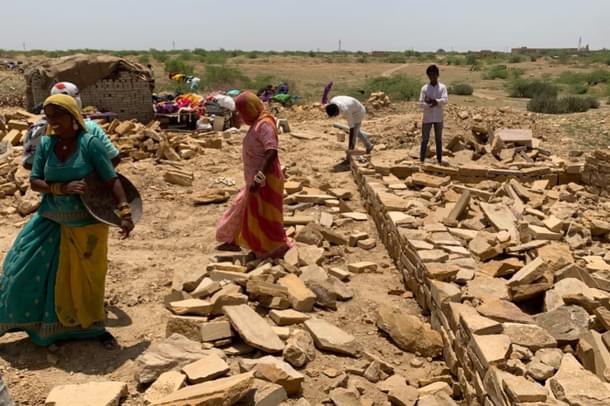
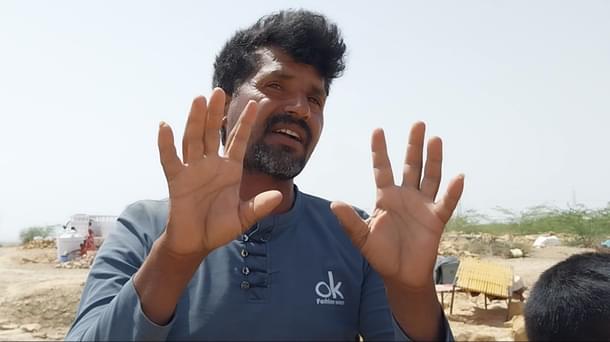
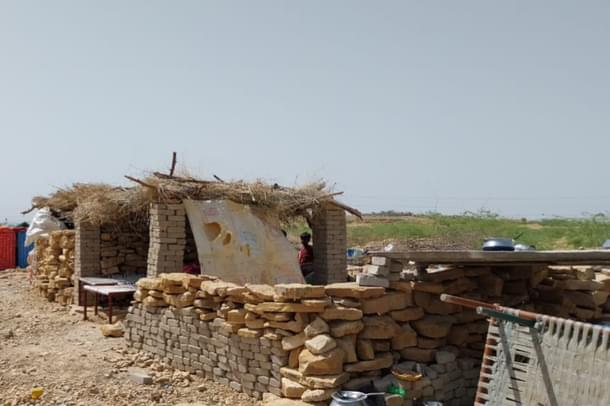
The new settlement is situated about 5 kilometres from the earlier site in Amar Sagar area and about 10 km from the main city, forcing the refugees to grapple with an array of challenges including the lack of shade, water, access to groceries and essential resources to construct adequate housing, he said.
The desolate tract of land is prone to strong winds that easily ravage the flimsy shelters made from wooden logs and tarpaulin sheets.
“There was a storm two nights ago,” he said, “it left all the shanties collapsed, leaving several children injured.”
When Swarajya visited, about 30 families were at the site, half of them seeking refuge under the limited shade provided by tilted cots.
The rest were executing the challenging task of constructing shelters using rocks from the hilly, rocky terrain and bricks salvaged from the demolished Amar Sagar site.
Most residents at the camp are from Rahim Yar Khan area of Sindh province of Pakistan and belong to Bhil tribal community, which comes under Scheduled Tribes in India.
School-going Rameshwar, whose family migrated five years ago, said the landscape is uneven and full of pits and ditches. There is constant fear of children falling into these hazards while playing, he said.
"Our parents have instructed us to keep a close watch on the kids, confining them under the cot for the entire day," he revealed, questioning whether such restrictions should be part of a normal childhood experience.
He also pointed at heat-induced rashes on some children’s foreheads and necks, attributing those to lack of trees and shade in the area.
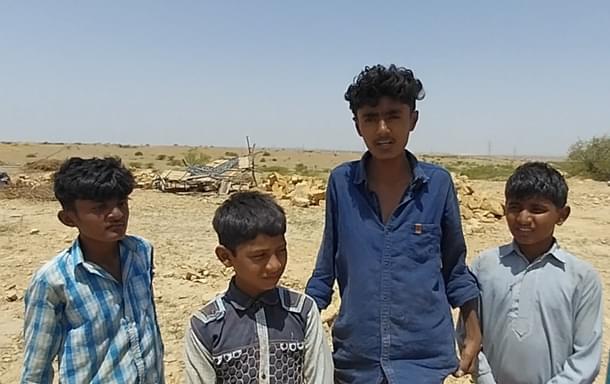
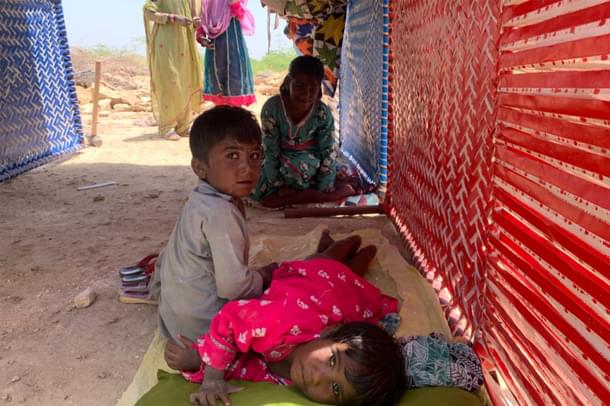
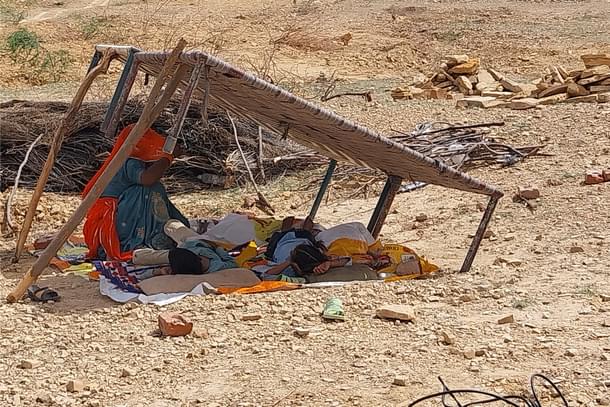
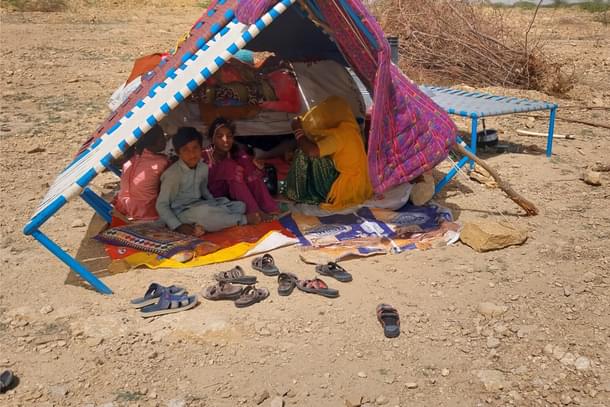
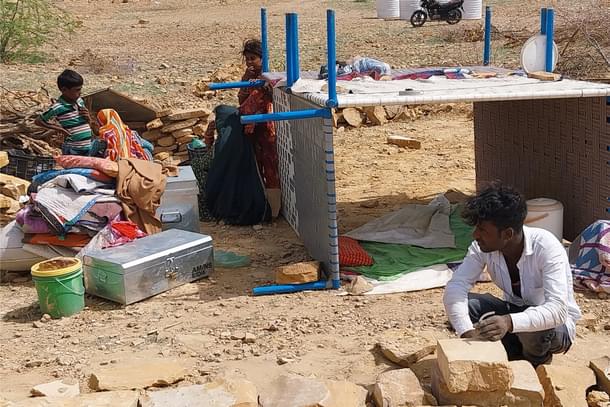
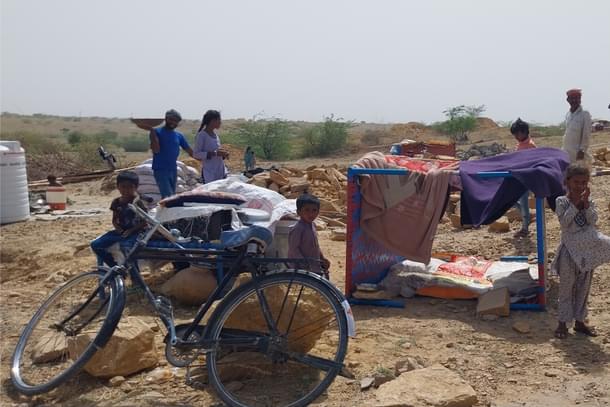
While residing in the rain basera, the refugees received food and water from the administration. However, once they were allotted land and had to vacate the shelter, the struggle for sustenance, water, and materials to rebuild their homes ensued.
Several non-governmental organisations have stepped in to provide assistance, offering bricks, cement sheets for housing, and essential groceries.
Najju Ram said that occasionally, the administration dispatches water tankers to their location. However, most of the time, the residents pool their resources and hire a tanker themselves, paying Rs 350 to fill their plastic water tanks, which only last a few days.
Unfortunately, the water becomes unbearably hot due to the absence of shade, rendering it unsuitable for consumption or even basic handwashing.
“We can’t drink that water in the afternoon as it feels like boiling water. Our hands will suffer burns if we wash with that water directly,” said Rameshwar.
Residents are compelled to wait until evening when temperatures cool down before quenching their thirst. Tragically, evening hours often bring windstorms that leave their already fragile shelters in disarray.
Najju Ram wryly remarked, "Anyone who read the news reports would assume we were granted a VIP colony," eliciting laughter from others. "But there are no facilities whatsoever here. It's akin to living in a hole in the desert."
Residents said that numerous families affected by demolition have opted against staying at the newly designated settlement, instead seeking refuge with their relatives or friends in different locales.
Amidst the numerous challenges faced by refugees during the rehabilitation process, activists are cautiously optimistic about the administration's efforts.
Hari Om, a Delhi-based athlete who has been working for Pakistani Hindu refugees for a decade, expressed his approval of the recent development, calling the allotment of land a significant milestone in the rehabilitation history of Pakistani Hindu refugees in India with a government agency providing land for the displaced community.
While acknowledging the existing problems, he characterised it as a “positive initial step”. He also noted the “supportive” nature of the local administrative staff, and cited forthcoming plans to establish water and electricity connections for the refugees.
Hari Om cited a recent order by the district collector forming a nine-member committee to resolve the members of the displaced Hindus. The committee comprises Jaisalmer Superintendent of Police, Jodhpur Vidyut Vitran Nigam and Municipal Commissioner of Jaisalmer, among others.
The Times of India reported this week that Jodhpur Divisional Commissioner Kailash Chand Meena recently directed officials to give “top priority” to resolving issues faced by displaced Hindus. The Jodhpur Division comprises six districts namely Jaisalmer, Jodhpur, Barmer, Sirohi, Jalore and Pali.
Dharmu Ram, a resident of the camp, however, rued that no government official had visited them since they shifted here from rain basera.
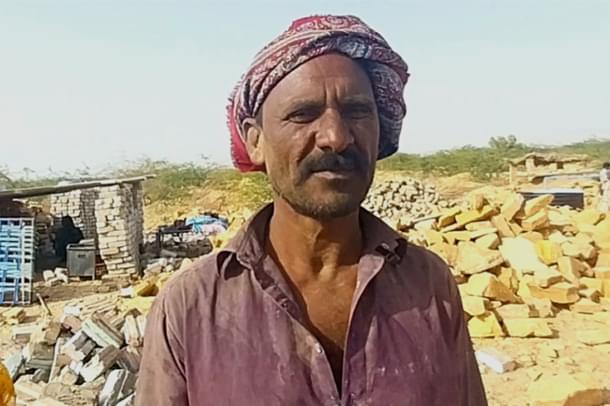
As the refugees wait for the promises to materialise, their hopes are pinned on getting the Indian citizenship, a crucial qualification enabling them to access government welfare programmes.
Three years ago, Union Home Minister Amit Shah made history by introducing the Citizenship (Amendment) Bill, 2019, in the Lok Sabha, where it garnered approval. Subsequently, it also received the green light in the Rajya Sabha.
The bill expedites the path to legal citizenship for religious minorities from Pakistan, Afghanistan, and Bangladesh. Those who arrived on or before 31 December 2014, were deemed eligible for citizenship without enduring a lengthy wait, while those who arrived later may obtain citizenship after residing in the country for a mere six years.
The bill triggered violent protests across several Indian states. In New Delhi, a prolonged sit-in protest staged by the Muslim community culminated in three days of communal clashes between Hindus and Muslims.
Despite its passage, the implementation of the Act remains pending as the Centre is yet to frame rules. In January, the Centre requested an extension for framing the rules for the seventh time.





